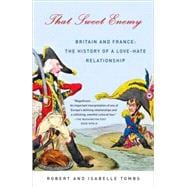
What is included with this book?
| List of Illustrations | |
| List of Maps | |
| List of Figures | |
| Acknowledgements | |
| Introduction | |
| Struggle | |
| Britain Joins Europe | |
| —The Sun King | |
| —William of Orange | |
| —Exiles: Huguenots and Jacobites Britain at the Heart of Europe, 1688–1748 | |
| —Malbrouck s’en va-t-en guerre | |
| —Fontenoy, May 11, 1745 France and the Young Chevalier, 1744–46 | |
| —Symbols The End of the Beginning | |
| —On His Most Christian Majesty’s Service Money: Waging War with Gold Britain: | |
| “Breaking windows with guineas” | |
| —Blowing Bubbles France: The Insolvent Landlord | |
| Thinking, Pleasing, Seeing | |
| —Portraying the Other: Rapin and Hamilton Voyages of Intellectual Discovery Travellers’ Tales | |
| —Le Blanc’s England | |
| —Mrs. Thrale and Madame Du Bocage Fashionable Feelings: The Age of Pamela and Julie | |
| —The Sincerest Form of Flattery | |
| —The Other Pamela Love, Hate and Ambivalence | |
| —Drawing a Lesson | |
| —Garrick’s French Dancers | |
| The French and Shakespeare: The Age of Voltaire | |
| The Sceptre of the World Sugar and Slaves | |
| The Wealth of the Indies “A few acres of snow” | |
| The Seven Years War, 1756–63 | |
| —Perfidious Albion | |
| —Encouraging the Others Pitt and Choiseul Years of Victory, 1757–63 | |
| —Dead Heroes Taking Possession of the Globe Language: The Challenge to French Ascendancy | |
| The Revenger’s Tragedy Choiseul Plans Revenge Taking the Great out of Britain | |
| The Second War for America, 1776–83 | |
| —Enter Figaro | |
| —Revolutionary Aristocrats Saving Captain Asgill The Biter Bit, 1783–90 | |
| —Cricket: The Tour of ’89 | |
| Ideas and Bayonets Blissful Dawn | |
| —Reflecting on Revolution | |
| —Cannibals and Heroes Jour de Gloire | |
| —Exiles: The Revolution Internal Injuries From Unwinnable War to Uneasy Peace | |
| —The First Kiss This Ten Years! Culture Wars | |
| Changing the Face of the World Napoleonic Visions Earth’s Best Hopes? | |
| British Resistance, 1803–5 | |
| —No Common War | |
| —Relics of What Might Have Been | |
| The Whale and the Elephant | |
| The Continental System versus the Cavalry of St. George | |
| —Captives From the Tagus to the Berezina, 1807–12 Invasion, 1813–14 | |
| —Le Cimetière des Anglais The End of the Hundred Years War, 1815 | |
| —Echoes of Waterloo Part I Conclusions and Disagreements Origins Culture Politics | |
| The Economy Europe | |
| The World Interlude | |
| The View from St. Helena | |
| Coexistence | |
| Plucking the Fruits of Peace Our Friends the Enemy | |
| —The British in Paris | |
| —Fast Food à l’anglaise | |
| —Pau: Britain in Béarn Romantic Encounters | |
| —The French and Shakespeare: The Romantics King Cotton, Queen Silk | |
| —Navvies and “Knobsticks” | |
| Fog and Misery Ally or “Anti-France”? | |
| The War That Never Was A Beautiful Dream | |
| The FirstEntente Cordiale, | |
| Table of Contents provided by Publisher. All Rights Reserved. |
The New copy of this book will include any supplemental materials advertised. Please check the title of the book to determine if it should include any access cards, study guides, lab manuals, CDs, etc.
The Used, Rental and eBook copies of this book are not guaranteed to include any supplemental materials. Typically, only the book itself is included. This is true even if the title states it includes any access cards, study guides, lab manuals, CDs, etc.
Excerpted from That Sweet Enemy: Britain and France: the History of a Love-Hate Relationship by Isabelle Tombs, Robert Tombs
All rights reserved by the original copyright owners. Excerpts are provided for display purposes only and may not be reproduced, reprinted or distributed without the written permission of the publisher.